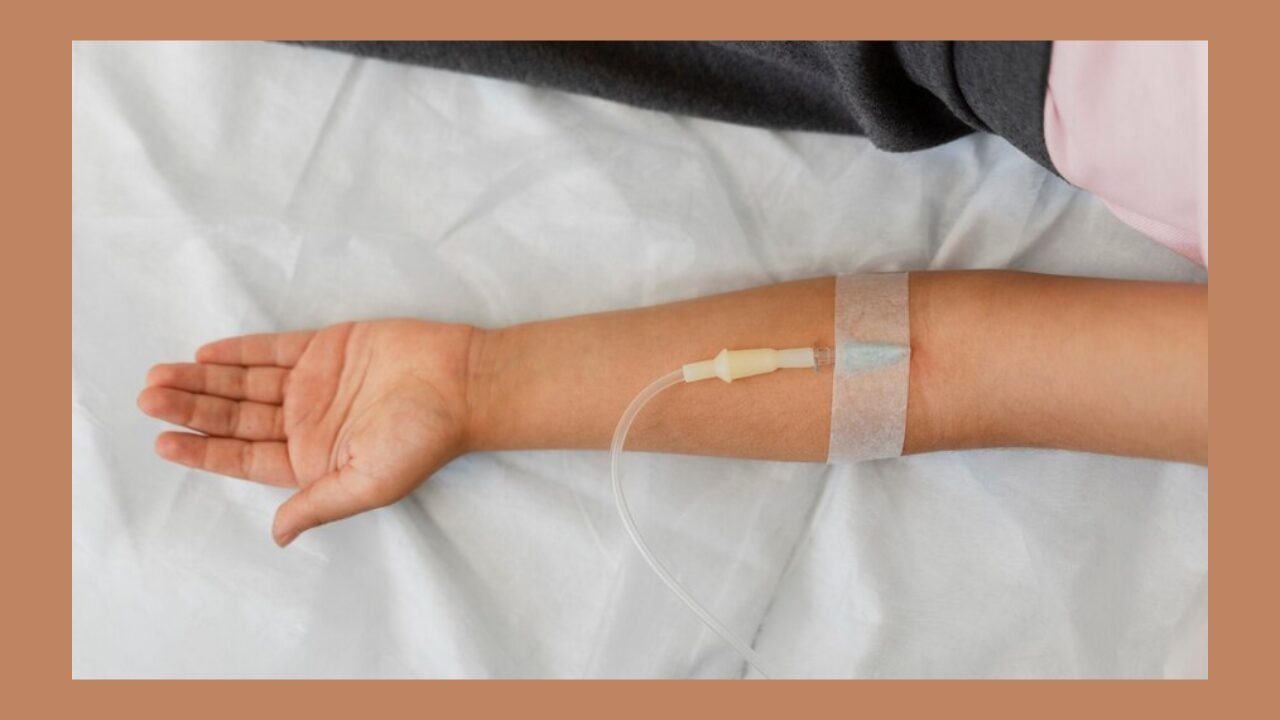Beginner’s guide to IV drips

Celebrities have played a pivotal role in making IV drips more popular; they use IV nutrient therapy to help themselves stay healthy whilst juggling the demanding and sometimes gruelling schedules. Some of the more popular IV drips, such as the Myers cocktail, NAD+, and high-dose vitamin C, favoured by celebs, are tailored to maintain immunity and keep energy levels.
IV drip clinics have been popping up nationwide offering nutrient therapy. And whilst access to this service has never been easier, it is important to remember that you should only ever go to a medical clinic for an IV drip. Why is this? IV drips are, ultimately, a medical procedure. Although the risk of side effects and infection is reasonably low, there is still a risk, and your choice of clinic should be taken seriously. A doctor-led clinic is best placed to deal with allergic reactions or other contraindications. It will have the appropriate medical expertise to deal with this, so you can rest assured that you are safe.
How do IV drips work?
IV drips were originally used in hospitals to provide hydration and medication to individuals who required it. However, as medical advancements have progressed, and preventative and functional medicine have become more popular, many individuals have utilised IV drips to maintain their vitamin and mineral levels. Generally speaking, IV drips take around 40 minutes to administer. A cannula is placed in a vein near the elbow while the patient relaxes. Vitamins are added to saline solution (though some clinics will use pre-mixed solutions), which directly enters the bloodstream to be utilised by the cells in the body. IV drips are an alternative method of nutrient supplementation for individuals who, for whatever reason, do not want to take oral supplements, have health issues that affect their nutrient intake, or need to top up their vitamin levels quicker than possible with oral supplements.
Why are vitamins so essential?
Vitamins and minerals are a source of energy for our cells; they fuel our bodies and keep them functioning properly, from our brain and internal organs to our skin. Nutrients are heavily involved in maintaining the cells in the body functioning properly, so our bodies work as they should. When we lead a very demanding lifestyle, such as having a job in the city, traveling a lot, having many commitments, and pushing our bodies through exercise, this can chew through the nutrients in our body faster than we can replace them naturally through food.
The way we usually get our nutrients into our bodies is through food. However, this is not as efficient as it may initially seem; when we eat food, only a small percentage of the vitamins and micronutrients are used in the body – much of the goodness is lost as the body processes it in the gut.
Many other factors also impact our nutrient intake, including intensive farming practices, which deplete soil quality, meaning that our food is not as nutrient-dense as it once was. In addition, with our highly processed modern-day diets, we don’t eat as many vegetables and nutrients as we should, which means that, generally, in society, our overall nutrient intake may not be optimal. We must also remember that certain health conditions, such as Crohn’s disease, ulcerative colitis, and other gut issues, can negatively affect how many nutrients are absorbed. With this in mind, it won’t be surprising to realise that many of us are deficient in important vitamins.
Additionally, our vitamin requirements change depending on our stage in life. According to the Nutrition Guide for Clinicians, children require more micronutrients. Older people also require different amounts. For instance, they need more vitamin D but less iron.
Symptoms of vitamin deficiency to look out for
Iron is essential for creating red blood cells to carry oxygen around the body and is the world’s most common nutritional deficiency. According to the World Health Organization (WHO), a whopping 30% of the world’s population is anemic due to a deficiency in this vital nutrient.
In the UK, vitamin D is the most common deficiency, largely due to our weather and the fact that we are exposed to less sunlight during the autumn and winter months than in the spring and summer. The main way our bodies absorb vitamin D is through exposure to the sun on our skin. This is easy during summer when it’s warm and we wear short-sleeved tops, but it’s more difficult when it’s cold outside. The UK government recommends that everybody supplements vitamin D daily in autumn and winter. Vitamin B12 is also a widespread deficiency, particularly in vegetarians and individuals who are vegan, because it is mainly contained in animal products.
READ MORE
Vitamin testing
Without vitamin testing, pinpointing exactly what vitamin you are deficient in can be tricky. This is because many of the signs of vitamin deficiency overlap with many other health conditions. Symptoms can also occur slowly and are commonly confused with other health conditions. Another difficulty is diagnosing different kinds of vitamin deficiency. However, some common signs might indicate a medical professional’s need for further investigation. These include (but are not limited to): hair loss, scaly skin, bleeding gums, brittle hair and nails, feeling weak, getting ill regularly, fatigue, dizziness, muscle weakness, joint pain, low mood, brain fog, and confusion.
As mentioned, it can be difficult to tell which vitamin you are low in, so a blood test from a reputable clinic is a good place to start. To ascertain an accurate picture, the only way to be certain is to have your blood tested for four vitamin levels. Experiencing any of the above symptoms? It’s time to contact your healthcare provider for support.
